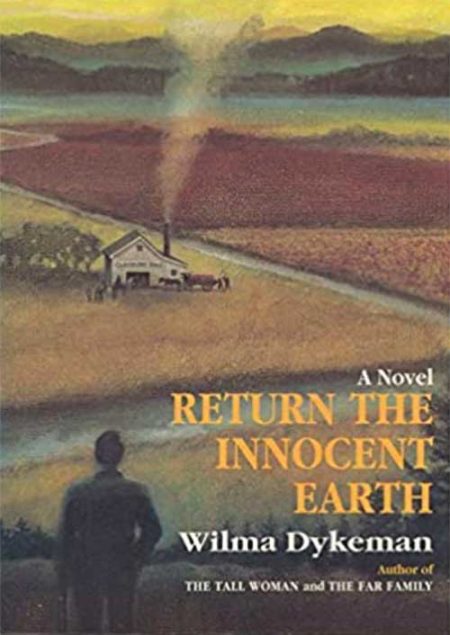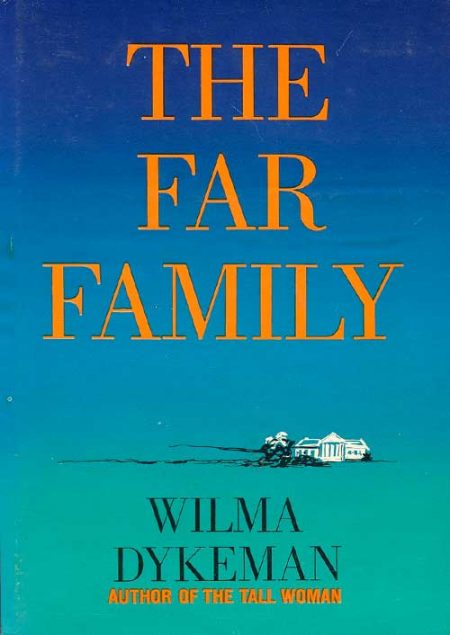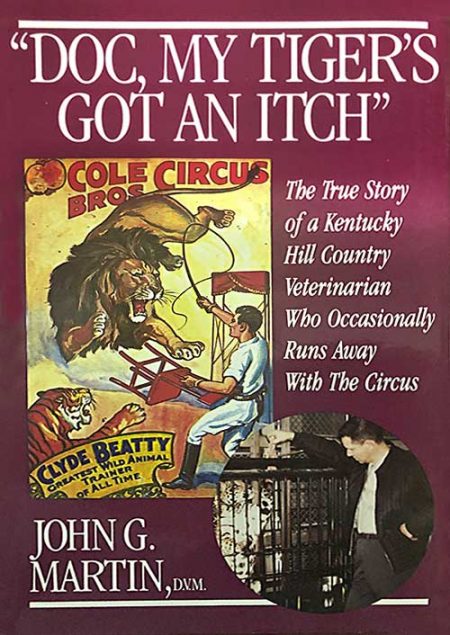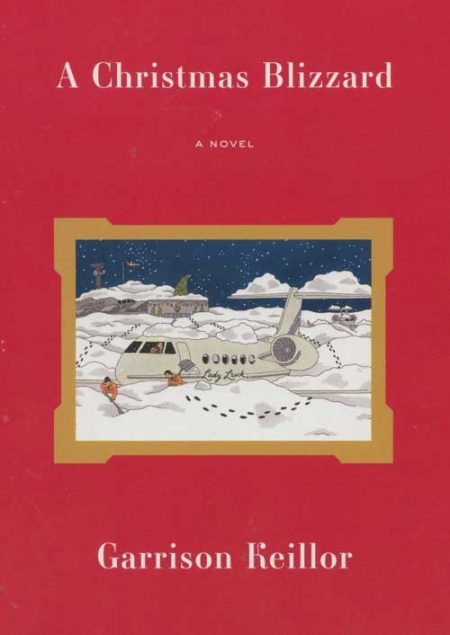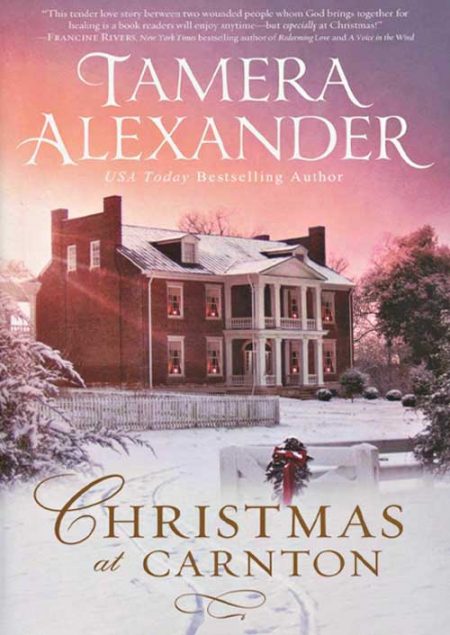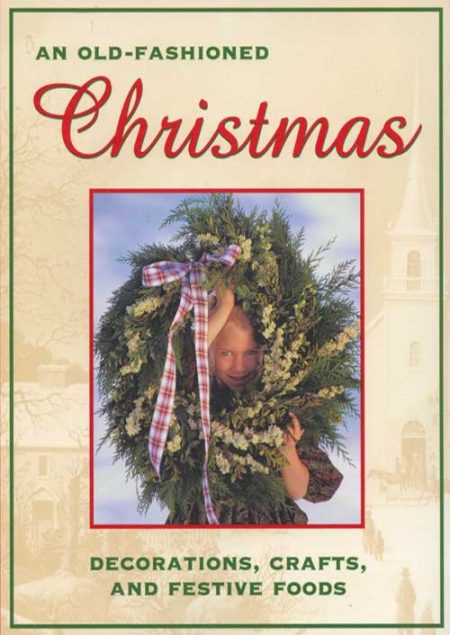-
 Lyrical prose and warm watercolor illustrations bring a "certain part of the country called Appalachia" alive for young readers. Two award-winning artists, forever touched by their experiences growing up in this unique landscape, have teamed to create a quietly powerful and beautifully crafted portrait of life in a timeless place. SOFTBACK VERSION By Cynthia Rylant
Lyrical prose and warm watercolor illustrations bring a "certain part of the country called Appalachia" alive for young readers. Two award-winning artists, forever touched by their experiences growing up in this unique landscape, have teamed to create a quietly powerful and beautifully crafted portrait of life in a timeless place. SOFTBACK VERSION By Cynthia Rylant -
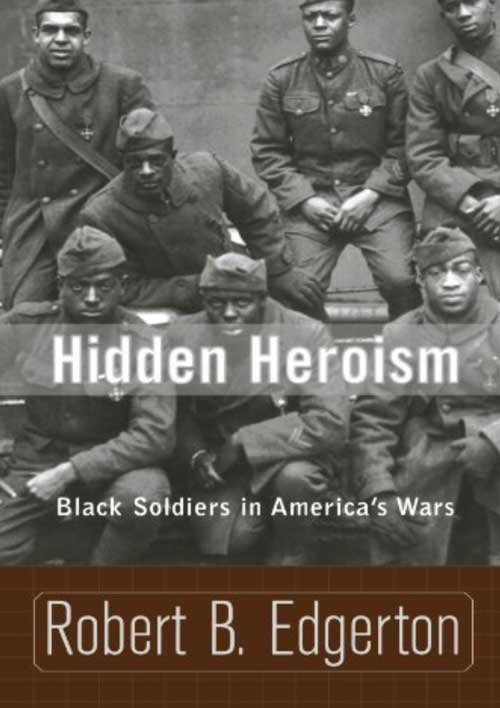 In Hidden Heroism, Robert Edgerton investigates the history of Afro-American participation in American wars, from the French and Indian War to the present. He argues that blacks in American society have long-suffered from a "natural coward" stereotype that is implicit in the racism propagated from America's earliest days, and often intensified as blacks slowly received freedom in American society. For instance, blacks served admirably in various wars, returned home after their service to short-term recongnition, and then soon found themselves even more seriously entrenched in a racist system because they were perceived as a threat to whites. This was true, Edgerton argues, until the Civil Rights movement and Vietnam, though the stereotypes have not been fully eradicated. In this book, Edgerton provides an accessible and well-informed tour through this little-known, but significant aspect of race in American military history. SOFTBACK VERSION By Robert B. Edgerton
In Hidden Heroism, Robert Edgerton investigates the history of Afro-American participation in American wars, from the French and Indian War to the present. He argues that blacks in American society have long-suffered from a "natural coward" stereotype that is implicit in the racism propagated from America's earliest days, and often intensified as blacks slowly received freedom in American society. For instance, blacks served admirably in various wars, returned home after their service to short-term recongnition, and then soon found themselves even more seriously entrenched in a racist system because they were perceived as a threat to whites. This was true, Edgerton argues, until the Civil Rights movement and Vietnam, though the stereotypes have not been fully eradicated. In this book, Edgerton provides an accessible and well-informed tour through this little-known, but significant aspect of race in American military history. SOFTBACK VERSION By Robert B. Edgerton -
 The Appalachian Trail is America’s most beloved trek, with millions of hikers setting foot on it every year. Yet few are aware of the fascinating backstory of the dreamers and builders who helped bring it to life over the past century. The conception and building of the Appalachian Trail is a story of unforgettable characters who explored it, defined it, and captured national attention by hiking it. From Grandma Gatewood—a mother of eleven who thru-hiked in canvas sneakers and a drawstring duffle—to Bill Bryson, author of the best-selling A Walk in the Woods, the AT has seized the American imagination like no other hiking path. The 2,000-mile-long hike from Georgia to Maine is not just a trail through the woods, but a set of ideas about nature etched in the forest floor. This character-driven biography of the trail is a must-read not just for ambitious hikers, but for anyone who wonders about our relationship with the great outdoors and dreams of getting away from urban life for a pilgrimage in the wild. HARDBACK VERSION Philip D'Anieri
The Appalachian Trail is America’s most beloved trek, with millions of hikers setting foot on it every year. Yet few are aware of the fascinating backstory of the dreamers and builders who helped bring it to life over the past century. The conception and building of the Appalachian Trail is a story of unforgettable characters who explored it, defined it, and captured national attention by hiking it. From Grandma Gatewood—a mother of eleven who thru-hiked in canvas sneakers and a drawstring duffle—to Bill Bryson, author of the best-selling A Walk in the Woods, the AT has seized the American imagination like no other hiking path. The 2,000-mile-long hike from Georgia to Maine is not just a trail through the woods, but a set of ideas about nature etched in the forest floor. This character-driven biography of the trail is a must-read not just for ambitious hikers, but for anyone who wonders about our relationship with the great outdoors and dreams of getting away from urban life for a pilgrimage in the wild. HARDBACK VERSION Philip D'Anieri -
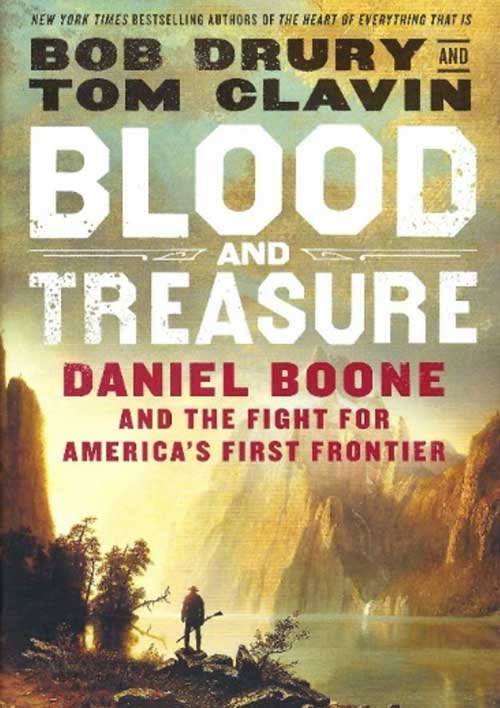 It is the mid-1700s, and England’s colonists in North America are eager to explore and settle the forest frontier west of the Appalachian mountains. This is the setting of the new book (2021), “Blood and Treasure.” The guide to this epic narrative is America’s first pathfinder, Daniel Boone – not the coonskin cap-wearing caricature of popular culture, but the flesh-and-blood frontiersman and Revolutionary War hero whose explorations would become the stuff of legend. HARDBACK VERSION By Bob Drury and Tom Clavin
It is the mid-1700s, and England’s colonists in North America are eager to explore and settle the forest frontier west of the Appalachian mountains. This is the setting of the new book (2021), “Blood and Treasure.” The guide to this epic narrative is America’s first pathfinder, Daniel Boone – not the coonskin cap-wearing caricature of popular culture, but the flesh-and-blood frontiersman and Revolutionary War hero whose explorations would become the stuff of legend. HARDBACK VERSION By Bob Drury and Tom Clavin -
Out of stock
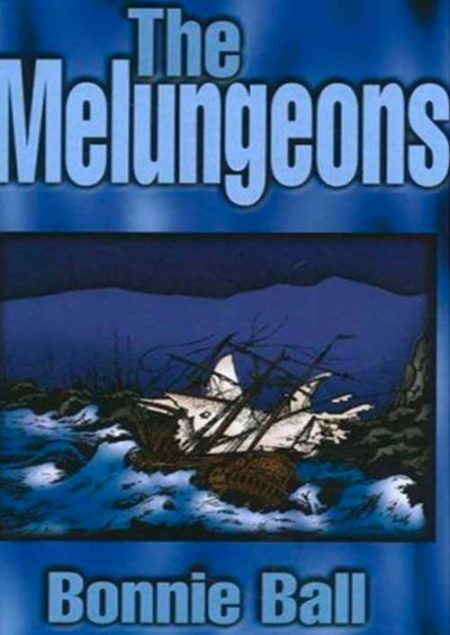 This thorough ethnological study is both scholarly and highly readable. In it the author objectively traces the roots of one of America’s more obscure peoples, the Melungeons. SOFTBACK VERSION By Bonnie Ball
This thorough ethnological study is both scholarly and highly readable. In it the author objectively traces the roots of one of America’s more obscure peoples, the Melungeons. SOFTBACK VERSION By Bonnie Ball -
 As early as 1654, English and French explorers in the southern Appalachians reported seeing dark-skinned, brown- and blue-eyed, and European-featured people speaking broken Elizabethan English, living in cabins, tilling the land, smelting silver, practicing Christianity, and, most perplexing of all, claiming to be Portyghee. Declared free persons of color in the late 1700s by the English and Scottish-Irish immigrants, the Melungeons, as they were known, were driven off their lands and denied voting rights, education, and the right to judicial process. The law was enforced mercilessly and sometimes violently in the resoundingly successful effort to totally disenfranchise these earliest American settlers. SOFTBACK VERSION By Brent Kennedy
As early as 1654, English and French explorers in the southern Appalachians reported seeing dark-skinned, brown- and blue-eyed, and European-featured people speaking broken Elizabethan English, living in cabins, tilling the land, smelting silver, practicing Christianity, and, most perplexing of all, claiming to be Portyghee. Declared free persons of color in the late 1700s by the English and Scottish-Irish immigrants, the Melungeons, as they were known, were driven off their lands and denied voting rights, education, and the right to judicial process. The law was enforced mercilessly and sometimes violently in the resoundingly successful effort to totally disenfranchise these earliest American settlers. SOFTBACK VERSION By Brent Kennedy -
 A charming, heart-warming Christmas taleabout the power of family, tradition, and love. In 1875, Owen Thomas, a poor Welsh coal miner, falls in love with a beautiful London actress, Jessica Lavery. He builds her a cottage in his village, and enchants her with the promise of the holidays they'll share after they marry. According to his special Thomas family tradition, the Christmas tree must always be outside, where it can look up to God. Owen carves her an angel to go on top of their tree, with lavender eyes like hers, a token more meaningful to her than any engagement ring. When Jessica breaks off their romance, Owen, broken-hearted, wraps the angel in his mother's shawl and brings her to America. There, she looks down over five generations, witnessing peace and war, triumphs and tragedies, reminding all who see her that Christmas is the time when families and sweethearts can come together, laughter and goodwill can lighten even the heaviest burden, and magic fills the earth. By Jane Maas
A charming, heart-warming Christmas taleabout the power of family, tradition, and love. In 1875, Owen Thomas, a poor Welsh coal miner, falls in love with a beautiful London actress, Jessica Lavery. He builds her a cottage in his village, and enchants her with the promise of the holidays they'll share after they marry. According to his special Thomas family tradition, the Christmas tree must always be outside, where it can look up to God. Owen carves her an angel to go on top of their tree, with lavender eyes like hers, a token more meaningful to her than any engagement ring. When Jessica breaks off their romance, Owen, broken-hearted, wraps the angel in his mother's shawl and brings her to America. There, she looks down over five generations, witnessing peace and war, triumphs and tragedies, reminding all who see her that Christmas is the time when families and sweethearts can come together, laughter and goodwill can lighten even the heaviest burden, and magic fills the earth. By Jane Maas -
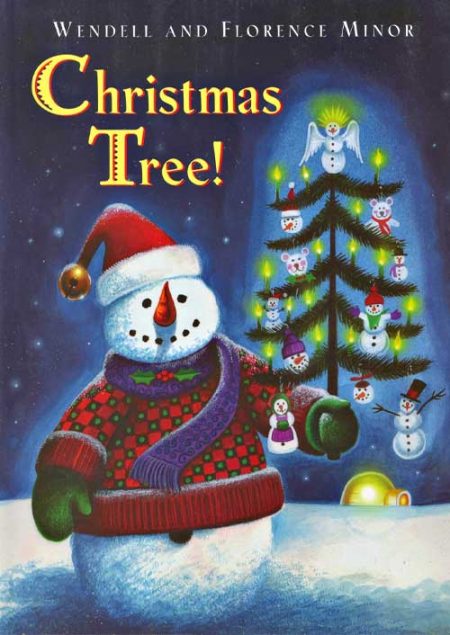 If you were a Christmas tree, what kind of tree would you be? A mighty tree or a tiny tree? A city tree or a country tree? A tree with curious features or a tree made just for creatures? Voyaging from cities to plains and in renderings of things miniature to grand, Wendell and Florence Minor lead young readers on an imaginative journey across America in tribute to one of our most beloved symbols — the Christmas tree. By Wendell and Florence Minor
If you were a Christmas tree, what kind of tree would you be? A mighty tree or a tiny tree? A city tree or a country tree? A tree with curious features or a tree made just for creatures? Voyaging from cities to plains and in renderings of things miniature to grand, Wendell and Florence Minor lead young readers on an imaginative journey across America in tribute to one of our most beloved symbols — the Christmas tree. By Wendell and Florence Minor -
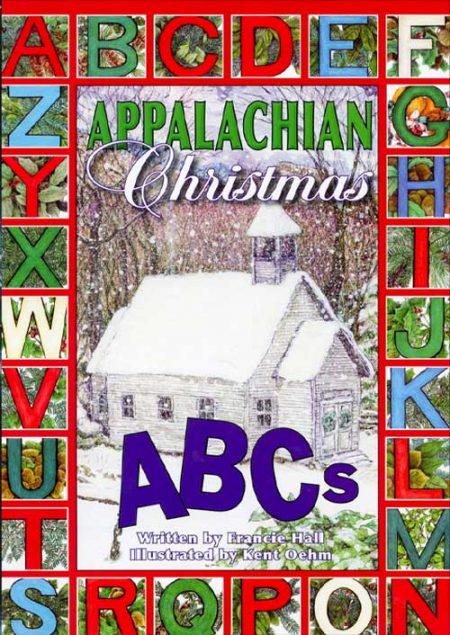 Laced throughout the litany of letters on this celebratory alphabet book is the meaning of Christmas with an Appalachian twist. Exploring the whimsy and worship of Yuletide in the mountains, each letter captures a glimpse of the traditions, food, and frolicking shared by family and friends. Incorporating a legend about the animals around the manger, a program with angels announcing God's glory, and choirs softly singing carols, this A-to-Z book for all ages will become a new Christmas tradition for families who gather around the tree each December. By Francie Hall Illustrated by Kent Oehm
Laced throughout the litany of letters on this celebratory alphabet book is the meaning of Christmas with an Appalachian twist. Exploring the whimsy and worship of Yuletide in the mountains, each letter captures a glimpse of the traditions, food, and frolicking shared by family and friends. Incorporating a legend about the animals around the manger, a program with angels announcing God's glory, and choirs softly singing carols, this A-to-Z book for all ages will become a new Christmas tradition for families who gather around the tree each December. By Francie Hall Illustrated by Kent Oehm -
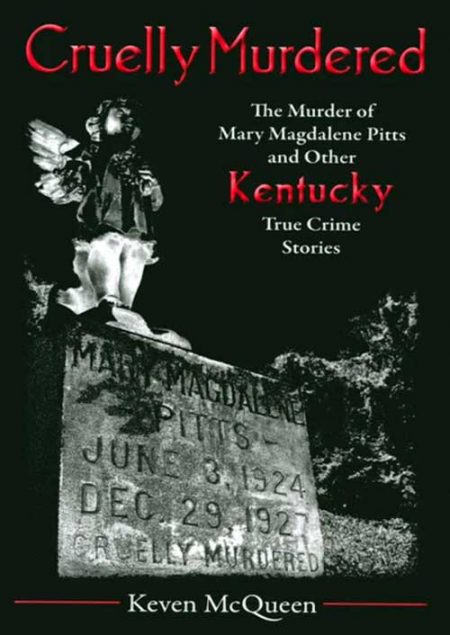 Cruelly Murdered: The Murder of Mary Magdalene Pitts and Other Kentucky True Crime Stories: In this follow-up to Murder in Old Kentucky, Keven McQueen presents detailed and thoroughly researched true crime stories from Kentucky history, spanning in time from the state's early history to the Roaring Twenties. The stories include the case of the governor's son who was tried for murder five tmes and eventually pardoned by his father; Edward Hawkins, a murderer on the move with a pronounced taste for bigamy; the 1883 shooting of a promising young Louisville artist; the infamous 1887 murder of Jennie Bowman, a Louisville maid, by two burglars; and the abuse and murder of three-year-old Mary Magdalene Pitts of Greenup County by her father and a housekeeper, still one of Kentucky's most notorious crimes. SOFTBACK By Keven McQueen
Cruelly Murdered: The Murder of Mary Magdalene Pitts and Other Kentucky True Crime Stories: In this follow-up to Murder in Old Kentucky, Keven McQueen presents detailed and thoroughly researched true crime stories from Kentucky history, spanning in time from the state's early history to the Roaring Twenties. The stories include the case of the governor's son who was tried for murder five tmes and eventually pardoned by his father; Edward Hawkins, a murderer on the move with a pronounced taste for bigamy; the 1883 shooting of a promising young Louisville artist; the infamous 1887 murder of Jennie Bowman, a Louisville maid, by two burglars; and the abuse and murder of three-year-old Mary Magdalene Pitts of Greenup County by her father and a housekeeper, still one of Kentucky's most notorious crimes. SOFTBACK By Keven McQueen -
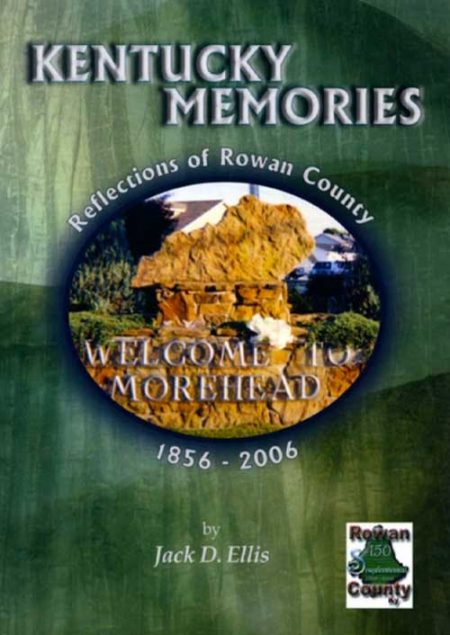 "In Kentucky Memories: Reflections of Rowan County, Jack Ellis has demonstrated an awareness of the important role of local history. During the past century-and-a-half, the human population of this amoeba-like area, carved out of Fleming and Morgan Counties, has matured into an Appalachian folk, cultural, economic, educational, and medical center. Literally scores of people have contributed both positively and negatively to the history of this community, and each of their acts in some form or another should remain as a record of their presence and activities. In the same way, every important human act documenting the past should should be passed on to future generations as a foundation for its presence and actions." — Dr. Thomas D. Clark HARDCOVER By Jack D. Ellis
"In Kentucky Memories: Reflections of Rowan County, Jack Ellis has demonstrated an awareness of the important role of local history. During the past century-and-a-half, the human population of this amoeba-like area, carved out of Fleming and Morgan Counties, has matured into an Appalachian folk, cultural, economic, educational, and medical center. Literally scores of people have contributed both positively and negatively to the history of this community, and each of their acts in some form or another should remain as a record of their presence and activities. In the same way, every important human act documenting the past should should be passed on to future generations as a foundation for its presence and actions." — Dr. Thomas D. Clark HARDCOVER By Jack D. Ellis -
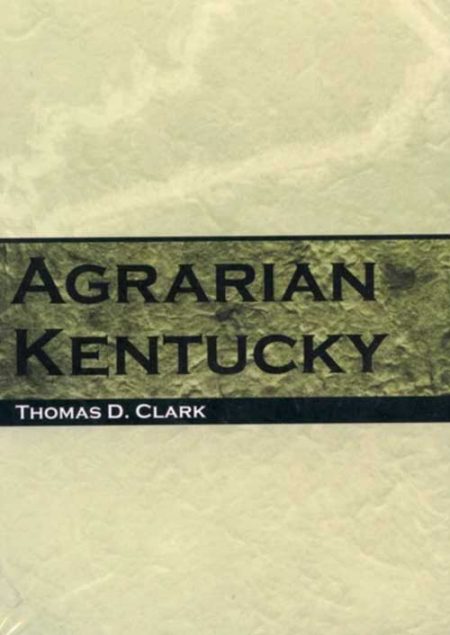 Since the earliest European settlers arrived in the area over two centuries ago, Kentuckians have felt a deep attachment to the land. From subsistence farmers in eastern Kentucky to wealthy horse owners in the central Bluegrass, land was, and continues to be, the state's greatest source of economic growth. It is also a point of nostalgia for a people devoted to tradition, a characteristic that has enriched Kentucky's culture but has proven detrimental to education and development. As timely now as when it was first published, Thomas D. Clark's classic history of agrarianism prepares readers for a new century that promises to bring rapid changes to the land and the people of Kentucky. By Thomas D. Clark
Since the earliest European settlers arrived in the area over two centuries ago, Kentuckians have felt a deep attachment to the land. From subsistence farmers in eastern Kentucky to wealthy horse owners in the central Bluegrass, land was, and continues to be, the state's greatest source of economic growth. It is also a point of nostalgia for a people devoted to tradition, a characteristic that has enriched Kentucky's culture but has proven detrimental to education and development. As timely now as when it was first published, Thomas D. Clark's classic history of agrarianism prepares readers for a new century that promises to bring rapid changes to the land and the people of Kentucky. By Thomas D. Clark -
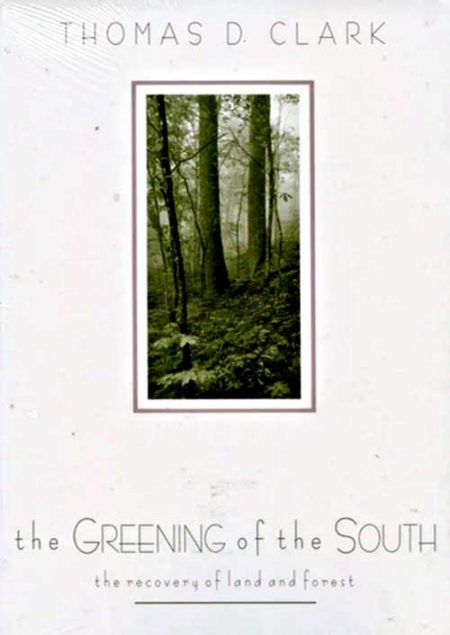 The region that ultimately became and remains today the South was originally a land of forests. Most of the species of trees that were native to North America flourished in the the South. For more than three centuries after the coming of the white man the southern forests gave way to agriculture and to the ravages of the lumber industry. But in the twentieth century, and largely since World War II, southerners and their industries have turned to controlled forestry and tree farming as being among the region’s most rewarding enterprises. Thus the recent decades have seen a remarkable new “greening of the South” By Thomas D. Clark
The region that ultimately became and remains today the South was originally a land of forests. Most of the species of trees that were native to North America flourished in the the South. For more than three centuries after the coming of the white man the southern forests gave way to agriculture and to the ravages of the lumber industry. But in the twentieth century, and largely since World War II, southerners and their industries have turned to controlled forestry and tree farming as being among the region’s most rewarding enterprises. Thus the recent decades have seen a remarkable new “greening of the South” By Thomas D. Clark -
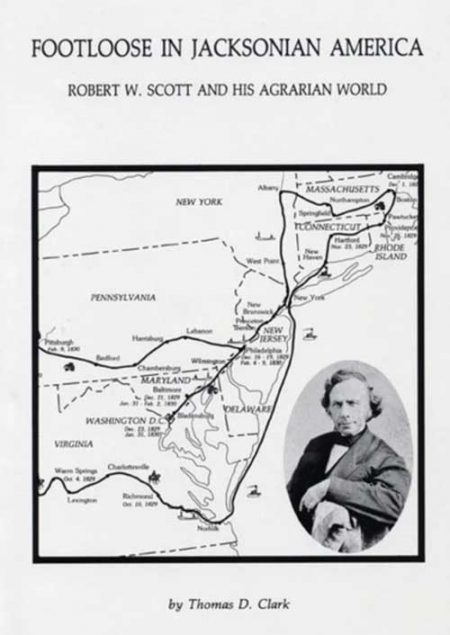 In the fall of 1829, young Robert Wilmot Scott rode away from Frankfort Kentucky on a trip that would take him through nine states. His journal entries about those travels present a vivid picture of Jacksonian America and of the prominent people of that era. Excellent pen portraits of James and Dolly Madison, James Monroe, John Marshall, James Buchanan, Sam Houston, Edward Everett, John C. Calhoun, John Randolph, John Quincy Adams, and others show Scott to be a famous Webster-Hayne debate; he gives a rich account of that discussion and its personalities. By Thomas D. Clark
In the fall of 1829, young Robert Wilmot Scott rode away from Frankfort Kentucky on a trip that would take him through nine states. His journal entries about those travels present a vivid picture of Jacksonian America and of the prominent people of that era. Excellent pen portraits of James and Dolly Madison, James Monroe, John Marshall, James Buchanan, Sam Houston, Edward Everett, John C. Calhoun, John Randolph, John Quincy Adams, and others show Scott to be a famous Webster-Hayne debate; he gives a rich account of that discussion and its personalities. By Thomas D. Clark -
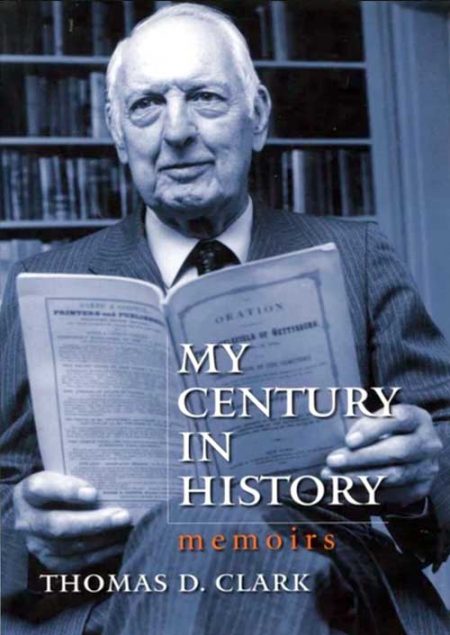 When Thomas D. Clark was hired to teach history at the University of Kentucky in 1931, he began a career that would span nearly three-quarters of a century and would profoundly change not only the history department and the university but the entire Commonwealth. His still-definitive History of Kentucky(1937) was one of more than thirty books he would write or edit that dealt with Kentucky, the South, and the American frontier. By Thomas D. Clark
When Thomas D. Clark was hired to teach history at the University of Kentucky in 1931, he began a career that would span nearly three-quarters of a century and would profoundly change not only the history department and the university but the entire Commonwealth. His still-definitive History of Kentucky(1937) was one of more than thirty books he would write or edit that dealt with Kentucky, the South, and the American frontier. By Thomas D. Clark -
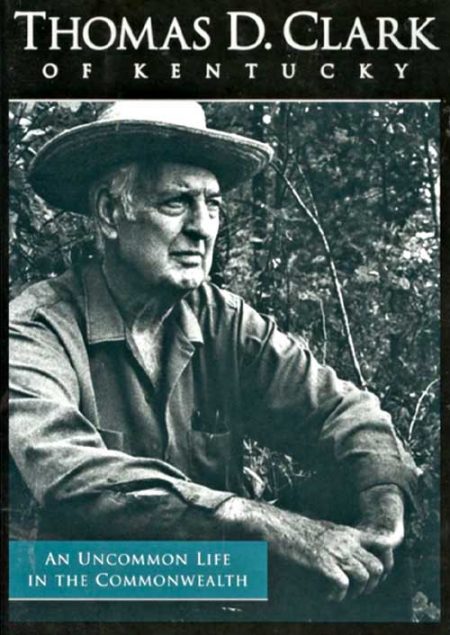 In 1990, the Kentucky General Assembly honored Thomas D. Clark by declaring him Kentucky’s Historian Laureate for life, at which time Governor Brereton Jones described him as “Kentucky’s greatest treasure.” Thomas D. Clark of Kentucky; An Uncommon Life in the Commonwealth is a celebration and exploration of the unparalleled life and career of a man who has both recorded the history and shaped the future of his adopted home state. Born on July 14th 1903, in Louisville, Mississippi, to a cotton farmer and a public school teacher, Clark was the oldest of seven children. Before enrolling in high school at age eighteen, he worked on a farm, in a sawmill, and as a cabin boy and deck hand on a dredge boat. After attending the University of Mississippi and earning graduate degrees at the University of Kentucky and Duke University, Clark joined the faculty of the University of Kentucky in 1931. There he chaired the history department from 1942 until 1965, influencing the lives of thousands of students.
In 1990, the Kentucky General Assembly honored Thomas D. Clark by declaring him Kentucky’s Historian Laureate for life, at which time Governor Brereton Jones described him as “Kentucky’s greatest treasure.” Thomas D. Clark of Kentucky; An Uncommon Life in the Commonwealth is a celebration and exploration of the unparalleled life and career of a man who has both recorded the history and shaped the future of his adopted home state. Born on July 14th 1903, in Louisville, Mississippi, to a cotton farmer and a public school teacher, Clark was the oldest of seven children. Before enrolling in high school at age eighteen, he worked on a farm, in a sawmill, and as a cabin boy and deck hand on a dredge boat. After attending the University of Mississippi and earning graduate degrees at the University of Kentucky and Duke University, Clark joined the faculty of the University of Kentucky in 1931. There he chaired the history department from 1942 until 1965, influencing the lives of thousands of students.



